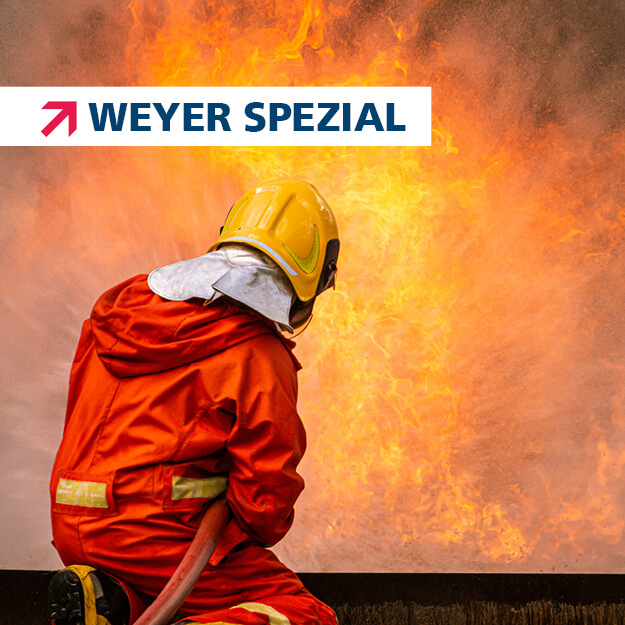Explosion protection in Europe is based on the EU ATEX Directive, which has been implemented in national law. The aim of the ATEX directive is to protect workers in potentially explosive atmospheres. To this end, the employer has to develop a measures-based explosion protection concept for avoiding explosive atmospheres, ignition sources or to control explosions, e.g. by designing pressure-resistant installations.
According to § 6 paragraph 9 of the Ordinance on Hazardous Substances or according to §5 of the Austrian Ordinance on Explosive Atmospheres (VEXAT), an explosion protection document must be drawn up for an installation or an area of an installation in which hazardous explosive mixtures may occur. The essential components of this document are
- the risk assessment and
- the explosion protection concept.
How can we support you with the explosion protection document?
We develop technically and economically optimised explosion protection concepts for you as part of the plant planning and approval process. In addition to the lowest possible investment costs, the main focus is on simple handling, operability and maintenance.
Directive 2014/34/EU has clearly defined explosion protection for electrical and non-electrical equipment. In addition to the new equipment, the employer must also check the suitability of equipment that was put into operation before the end of the transitional period on 30 June 2003.
What services can we offer you?
We can provide you with proof of explosion protection suitability for equipment already in use. For this purpose, we carry out an ignition hazard assessment in accordance with DIN EN ISO 80079-36 and prepare the necessary technical documentation. If necessary, notified bodies (e.g. IBExU from Freiberg) are involved in this.
The inspections of the equipment and Ex systems must be carried out by competent persons or an approved inspection body (ZÜS) on behalf of the operator. This includes tests before the first commissioning according to § 15 of the Ordinance on Industrial Safety and Health (BetrSichV) (or §7(1) VEXAT) as well as recurring tests according to § 16 BetrSichV (or §7(2) VEXAT).
Furthermore, according to § 3(6) BetrSichV, the inspection intervals for electrical and non-electrical equipment must be specified. This should be done in close consultation between the employer and the inspector so that the individual operating conditions can be taken into account.
What services can we offer you?
We can inspect all devices and explosion-protected systems that are not subject to the permit requirement of §18 sentence 1 nos. 3-7 of the BetrSichV. Furthermore, we can determine the maximum inspection intervals for all devices and Ex systems in accordance with the BetrSichV. (The maximum inspection intervals according to the BetrSichV can be adjusted by the inspector if necessary due to operating conditions).
The large number of new laws, ordinances, technical rules and standards in explosion protection require the operator to deal intensively with these issues. If he wants to implement all rights and obligations in compliance with the regulations, he must first obtain comprehensive information:
Which new regulations have come into force for which area of the plant?
What are the individual consequences for equipment, operation and organisation?
But: All tasks that lie outside your core business tie up time, money and resources.
Which tasks can we take off your hands?
We offer in-house training courses in which our experts impart their specialist knowledge of explosion protection in accordance with the ATEX Directive in a targeted manner. The operator determines the focus of the content. The training courses do not take the form of a frontal lecture; instead, after a brief introduction, the expert encourages a lively discussion in which new questions are repeatedly raised and answered. This ensures that all individual questions are clarified. In addition to operating and planning engineers, those responsible for operational safety will also benefit from our in-house training.
Services
- Explosion protection documents
- Explosion protection concepts within the framework of approval procedures
- Explosion protection concepts for manufacturers within the framework of the MRL
- Ignition hazard assessment (ZGB) of individual devices
- for the declaration of conformity according to ATEX or
- for operators within the framework of the GBU
- Statements/expert opinions
- Consultations
- Inspections according to §§ 15, 16 BetrSichV
- Training
- Calculations of
- Relief areas
- Dispersion of gases and thus Ex-zone around relief valves
- Appointment of an Ex-protection officer
Years of experience
Explosion protection concepts created
Explosion protection documents created
weyer special: explosion protection
In the field of explosion protection, numerous new directives, laws, regulations and technical rules have been issued in recent years. The new regulations increase the operational and organisational demands on operators: they are saddled with a much higher degree of personal responsibility… Download weyer special here
Frequently asked questions
If hazardous explosive mixtures can form in the area of the plant under consideration, it must be regarded as an “Ex plant”. The occurrence of hazardous explosive mixtures must be assessed without the inclusion of protective measures.
This means that even if no hazardous areas (Ex zones) are defined in a plant because of (explosion) protection measures (technical ventilation, inerting, etc.) that prevent the formation of explosive mixtures, this plant is an Ex plant and these protection measures must be checked accordingly.
When handling hazardous substances, a risk assessment (GBU) must always be carried out. The Ordinance on Hazardous Substances (GefStoffV) does not mention “de minimis limits”.
In this GBU, however, it can be concluded on the basis of TRGS 510 “Storage of hazardous substances in portable containers” that, depending on the classification of the hazardous substance (H-phrases), no special protective measures that go beyond the general requirements of a hazardous substance storage facility are necessary. This is the case, for example, with extremely flammable liquids (H224) in quantities ≤ 10 kg. For ≤ 200 kg, extended requirements for the hazardous substance storage facility are still sufficient. For > 200 kg, however, special protective measures (explosion protection) must be implemented.
Yes, according to §14 (2) GefStoffV, employees must be instructed verbally about all hazards that occur and the corresponding protective measures, this also includes hazards due to explosions. The instruction can take place within the framework of the occupational health and safety instruction.
The risk assessment for hazards from explosions must be presented in the explosion protection document. All risk assessments must be reviewed regularly in accordance with §6(10) GefStoffV and updated immediately in the event of significant changes.
For installations in which hazardous explosive atmospheres may occur, the minimum inspection intervals are specified in the Ordinance on Industrial Safety and Health (BetrSichV) Annex 2 Section 3 No. 5. This BetrSichV has been in force since 2015. In the case of systems that were commissioned before 1 June 2012, a transitional period applied until 01 June 2018, by which time these systems had to be inspected on a recurring basis.
In the case of hazardous explosive mixtures, inspection intervals are to be specified in the GBU, the link to the inspection intervals of the BetrSichV does not apply, although these are generally useful as a reference value.
No, the explosion protection document is the risk assessment (GBU) according to §6(9) GefStoffV and only considers hazards due to explosions. The GBU according to §3 BetrSichV considers all hazards that can occur during use with work equipment and therefore includes other hazards. However, reference can be made to the explosion protection document for the item “Hazards due to explosions”.
No, it is not mandatory to graphically illustrate the Ex zones identified in the explosion protection document in a plan. However, it is a very helpful means of displaying the Ex zones clearly and at a glance, thus making it easier to implement them in the operational process.
It is basically up to the employer how he wants to organise this. Here, too, there are no specifications. Depending on the size of the enterprise, it may be clearer to consider parts of the site in a partial explosion protection document and to draw up a superordinate document for all partial documents in which measures and basic principles are defined that apply to all.
If measurement and control technology is used to monitor explosion protection measures, it must be carried out in accordance with TRGS 725. TRGS 725 thus replaces the former classification of EMSR technology according to VDI 2180 Part 6.








